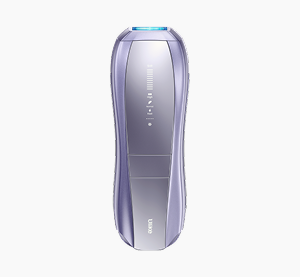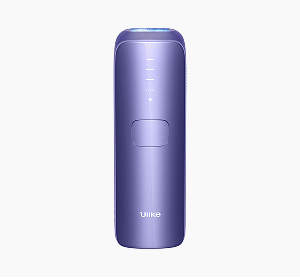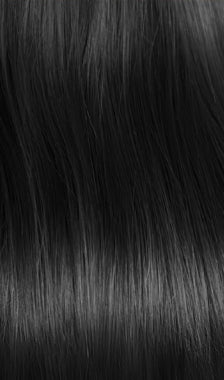
How Long Does Laser Hair Removal Take? What Can You Expect?
Laser hair removal is one of the most frequently done cosmetic procedures for getting rid of unwanted body and facial hair. Although uncomfortable, laser hair removal is not as painful as that of other hair removal methods.
Laser hair removal utilizes concentrated light to target hair follicles, leading to a reduction in hair growth over time.
Additionally, its semi-long-lasting results make it a popular choice for removing objectionable body hair among women and as well as men. However, you need a couple of sessions before achieving the desired results.
The semi-long-lasting results can significantly reduce the frequency of hair removal sessions, making it a convenient option for many individuals.
Multiple sessions are typically necessary to achieve optimal results, as hair grows in different cycles.
Understanding hair growth cycles is crucial, as treatments are usually spaced several weeks apart to align with these cycles for maximum effectiveness.
These results can vary, but many find the treatment to be more effective and less time-consuming than traditional methods.
Many individuals prefer laser hair removal due to its potential for longer-lasting results compared to methods like shaving or waxing, which require frequent upkeep.
Effectiveness can depend on various factors, including hair color and skin type, which may influence treatment outcomes.
Consultation with a professional can help determine the most suitable approach based on your individual characteristics, enhancing the overall effectiveness of the treatment.
Thus, the question here would be “How long does laser hair take?”. We plan on sharing the detailed answer in this article so that you can set realistic expectations. Also, read IPL vs. Salon Laser Hair Removal: Which is Better?
Without further ado, let us dive into it.
Table of Contents:
- Part 1: Understanding Laser Hair Removal
- Part 2: Factors Affecting Treatment Duration
- Part 3: How Long is a Laser Hair Removal Session
- Part 4: How Long Does Laser Hair Removal Take to Be Long-lasting?
- Part 5: How Long to Wait Between Laser Hair Removal Sessions?
- Part 6: How Long Does Laser Hair Removal Last?
Waiting between sessions is crucial for ensuring that the hair follicles are effectively targeted during the next treatment.
Understanding the longevity of laser hair removal results can help you plan your treatments and manage expectations regarding hair regrowth.
Knowing how long results last is essential for setting realistic goals for hair removal and determining when to schedule your next appointment.
Part 1: Understanding Laser Hair Removal

Laser is a technology that works to eradicate the hair follicles. Hair follicles are the cells that give rise to the hair strand. The stronger a follicle is, the greater the hair growth and laser eliminates these follicles.
It does so by getting absorbed into the pigmented hair while leaving the pigment-less skin intact. Once the light rays from the laser go all the way to the hair roots, they are transformed into heat energy by the process of selective thermophotolysis. Then. this heat kills the hair follicle.
While many hair follicles are killed, some of them just undergo a dormant phase. In both cases, unwanted hair regrowth is greatly reduced and you can enjoy hairless silky smooth skin for a long time.
Understanding the process of how laser hair removal affects hair follicles can help set realistic expectations for results.
Being informed about the treatment can help you feel more confident and satisfied with the outcomes.
Also, check What to Do Before Laser Hair Removal, 7 Things You Won’t Miss. In addition, laser hair removal has several other benefits including
Understanding pre-treatment guidelines can help enhance your overall experience and results during the hair removal process.
Before undergoing treatment, it’s essential to be well-informed and prepared to maximize the effectiveness of your sessions.
Knowledge about your treatment can empower you to ask the right questions and make informed decisions.
Preparation is key to achieving optimal results, so ensure you understand the necessary steps before treatment.
Being aware of preparation steps not only improves results but also ensures a smoother treatment process.
- No skin damage: As the rays from the laser are only absorbed into the “pigmented” part of the body, the hair is targeted while the skin is not affected. Consequently, there is little to no long-lasting damage to the skin.
- Suitable for the full body: From the face to the intimate regions, the laser works well for all body parts where unwanted hair grows.
- No ingrown hair, folliculitis, or strawberry legs: Laser removes the hair follicles. Thus, it also removes the root cause of skin conditions like an ingrown hair, strawberry legs, and hair follicle infections.
- Low-maintenance: While you need 6 to 12 sessions for semi-long-lasting results of laser initially, only 1 or 2 yearly maintenance sessions are needed afterward.
- Precise treatment: The highly precise, coherent, and mono-spectrum light of laser you to customize your treatment accurately.
Effective for various areas of the body, this treatment can provide a versatile solution for unwanted hair concerns.
By targeting the hair follicles directly, the laser may help prevent common skin issues associated with traditional hair removal methods.
This low-maintenance approach makes laser hair removal an attractive option for those looking to reduce the frequency of hair removal efforts over time.
Regular maintenance sessions can significantly reduce the need for frequent treatments, making it a convenient option for long-term hair removal.
With the ability to adjust settings according to individual needs, laser treatment offers a customized experience that can enhance safety and effectiveness.
Precision in treatment allows practitioners to target specific areas effectively, leading to better outcomes.
Part 2: Factors Affecting Treatment Duration
Laser hair removal takes a variable number of sessions on different body parts. And each session of the laser takes a specific time. Thus, here are the factors that affect the treatment duration.
Understanding these factors can help patients better plan their treatment schedules and set realistic expectations for results.
Understanding these factors can help you better prepare for your laser hair removal journey and anticipate the time commitment involved.
Being aware of these factors allows for a more tailored treatment plan, enhancing the overall effectiveness and efficiency of the procedure.
Hair Type and Color:
Laser hair removal is more effective on dark hair. So, the darker the hair, the shorter the treatment duration. Moreover, laser hair removal treatment takes more time for people with coarse hair as the hair follicles are stronger.
Dark hair is generally more responsive to laser treatments, which can lead to shorter session times for individuals with this hair type.
Shorter session times can lead to increased comfort and satisfaction, making the process less daunting.
Having dark hair can significantly influence the effectiveness of the laser, ensuring that the energy is absorbed more effectively, which may lead to better results in fewer sessions.
With better results achieved in fewer sessions, individuals can enjoy a more efficient path to smooth skin.
Skin Type and Tone:
People with fair skin tones often have shorter treatments as the laser can target dark hair directly without interfering with the skin.
Fair skin tones typically facilitate a smoother experience during treatments, as the contrast between the hair and skin allows for more effective targeting by the laser.
This enhanced targeting helps in achieving optimal outcomes in less time, making treatments more efficient.
Fair skin tones enhance the effectiveness of laser hair removal by allowing the laser to focus on the hair without affecting the skin, leading to efficient treatment durations.
As a result, individuals may experience faster completion of their treatment plans, contributing to overall satisfaction.
Size of Treatment Area:
The most obvious factor that affects the treatment duration of the laser is the size of the treatment area. So, the laser takes a few minutes on the face while upto an hour on the legs.
Size of the treatment area directly influences the duration of the session, with larger areas naturally requiring more time to cover effectively.
The Specific Laser Technology:
The most advanced laser technologies like Alexandrite and Diode are relatively faster as compared to the older lasers like Nd: Yag and Ruby.
Advanced laser technologies tend to improve both the speed and effectiveness of treatments, contributing to reduced session times for patients.
The Expertise of your Laser Hair Removal Expert:
Lastly, an expert is expected to treat your skin faster and more effectively as compared to an amateur.
The expertise of your practitioner can significantly impact the efficiency of the treatment, which is essential in achieving optimal results.
Experienced practitioners not only perform treatments more quickly but also enhance overall effectiveness, ensuring a better experience for clients.
Part 3: How Long is a Laser Hair Removal Session?
Keeping all factors in mind, the average duration of a laser hair removal session can be anywhere from 15 minutes to an hour. So, here is how long is laser hair removal session is on different parts of the body to give you an idea.
Face:
Laser hair removal on the face takes the least time which is only 15 minutes. However, it might extend to 30 minutes if you also include your shoulders and neck region.
Facial treatments are quick and convenient, making them popular for individuals seeking efficient hair removal in a short time.
Quick sessions for facial treatments make them ideal for those with busy schedules, ensuring you can achieve smooth skin without a lengthy time commitment.
Underarms:
The time taken for the laser hair removal treatment of the underarms is similar to that of the face. It means your both armpits can be treated in 15 to 20 minutes.
Underarm treatments are efficient, allowing for fast hair removal that fits seamlessly into your routine, similar to facial sessions.
Underarm treatments align closely with facial sessions, providing a quick and manageable option for those looking to maintain hair-free skin.
Legs:
The legs are the largest area of the body and the hair on the legs is also coarse and thick. Therefore, the treatment session for full legs takes approximately an hour while the treatment of legs below the knees takes around 30 minutes.
Back and Chest:
The back and the chest in women take around 40 minutes while it can take longer in men.
Back and chest treatments can vary significantly between genders, with men often requiring longer treatment times due to denser hair growth.
Understanding gender differences in treatment times can help individuals plan effectively for their sessions, ensuring they allocate sufficient time for their appointments.
Bikini Lines:
Depending upon the precision and pattern you want, laser hair removal on the bikini lines also takes 15 to 30 minutes.
Bikini line treatments can vary in duration based on the desired level of detail, accommodating both quick sessions and more extensive procedures.
Choosing the right treatment for bikini lines is essential, as it impacts both comfort and results, making it important to discuss preferences with your technician.
Full body:
You need to be prepared to spend almost 2 hours at a laser hair removal clinic if you plan to have full-body laser hair removal in one go.
Full-body treatments can be time-consuming, so it's essential to prepare for a longer visit to the clinic, ensuring all areas are effectively treated.
Planning for a full-body treatment means being mentally and physically prepared for the session, as it involves multiple areas that need attention.
Also, give How Painful Is Laser Hair Removal? (& 5 Nearly painless Ways) a read to determine if you can take the pain lasting for a few minutes to 2 hours.
It's important to assess your own pain tolerance before undergoing treatment, as experiences may vary among individuals.
Part 4: How Long Does Laser Hair Removal Take to Be Long-lasting?

As laser hair removal is a multiple-step procedure, let us see how it relates to the hair growth cycle.
Understanding the hair growth cycle is crucial, as it influences the number of sessions needed for optimal results, with each phase presenting unique challenges.
Each hair growth phase has implications for treatment, making it vital to coordinate your sessions with your hair cycle for best results.
Understanding the hair growth cycle is essential for effective treatment, as it highlights the importance of timing in the laser hair removal process.
Understanding the hair growth cycle can greatly influence the effectiveness of your treatments, as it determines the ideal moments for intervention.
Understanding the hair growth cycle is vital for the effectiveness of laser hair removal treatments, as it helps identify the best timing for each session.
- Anagen: Anagen, the active phase of the hair regrowth cycle, is the only phase where laser hair removal is effective. It is because the hair strand is attached to the follicle in this phase and it is also most pigmented.
- Catagen: The hair strand detached from the follicle in this phase and stops growing. Laser is the least effective in this phase.
- Telogen: Hair is resting in the telogen and it sheds at the end of the telogen. As hair is not growing or attached to the follicle, laser hair removal does not work on hair that is in telogen.
During the catagen phase, hair follicles undergo a transition, making it an ideal time to understand why multiple treatments are necessary for optimal results.
During the catagen phase, hair follicles are transitioning, which is why it's important to have multiple treatments to target hair in the most effective growth stage.
Knowing this phase helps clarify why a comprehensive treatment plan is essential for achieving the best outcomes.
In the telogen phase, hair is not in a growth state, which is crucial to consider when planning your laser hair removal sessions.
Since hair in the telogen phase is not actively growing, it is critical to time your laser hair removal sessions for optimal results.
This phase highlights the importance of scheduling sessions at the right time to maximize the effectiveness of the treatment.
The optimal activity of laser hair removal in anagen while little to no activity in catagen and telogen phases is why you need multiple sessions of laser hair removal to get long-lasting results.
Scheduling sessions correctly ensures that you can take full advantage of the laser's effectiveness during the anagen phase for long-lasting results.
The need for multiple sessions is directly linked to the phases of hair growth, emphasizing why consistent treatments are key to achieving long-lasting results.
This approach ensures that hair follicles are targeted in their most receptive state, enhancing the overall effectiveness of each session.
Let us take a few examples of how many sessions you need for semi-long-lasting results on different parts of the body.
For instance, the number of sessions can vary significantly for areas like the legs compared to the face, reflecting the unique needs of each region.
Different body areas may require varying session counts, as hair density and growth rates can differ significantly across regions.
Factors such as biological variations and individual hair characteristics can influence the number of sessions you'll need.
The individual characteristics of your hair, such as color and thickness, play a crucial role in determining the effectiveness of the treatment.
| Area of the Body | Number of Sessions | Time Needed |
| Face | 3 to 6 | 4 to 8 months |
| Bikini Lines and Brazilian | 6 to 12 | 7 to 14 months |
| Legs and Arms | 6 to 12 | 7 to 14 months |
| Armpits | 5 to 10 | 6 to 12 months |
| Upper Lips and Chin | 4 to 10 | 6 to 12 months |
Part 5: How Long to Wait Between Laser Hair Removal Sessions?
Laser hair removal sessions are spaced at an interval of 4 to 6 weeks depending upon the rate of hair regrowth. This rate in turn depends on the desired treatment area of the body and hair growth cycle in that area.
About 80% of the hair is in anaphase at one point. Your first laser hair removal session will remove most of these hair follicles. Some of these hair follicles are destroyed while others are only damaged to a certain extent. So, you need to wait for the remaining hair to go into anaphase for the laser to act on it.
Also, missing any session will allow the partially destroyed hair follicles to regrow and produce hair. Furthermore, the interval of laser hair removal sessions on the face, bikini lines, legs, and armpits is almost the same.
Maintaining a \1 for your sessions is crucial to achieving optimal results in hair reduction.
Part 6: How Long Does Laser Hair Removal Last?
Laser hair removal is a long-lasting method of getting rid of unwanted body and facial hair. However, it is not a long-lasting hair removal method. Typically, it lasts anywhere between 2 to 10 years.
While laser hair removal can be effective, results may vary significantly from person to person, depending on factors such as hair type and skin tone.
While it provides a \1, it's important to note that results can vary based on individual circumstances.
Some women have reported that they did not experience any hair regrowth on their faces for 10 years after the completion of laser hair removal treatment while others grew hair on their limbs or armpits within a few years.
This variation can be influenced by factors like hormonal changes, skin type, and treatment frequency, making individualized assessment important.
These experiences highlight the \1 in treatment effectiveness and hair regrowth patterns.
Individual experiences with hair regrowth can vary widely, so it’s important to track your results and consult with your practitioner about your specific situation.
Consulting with a qualified practitioner can help you understand what to expect based on your unique hair and skin characteristics.
This variation in the results is because of the individual factors. Most women need 1 to 2 yearly laser hair removal sessions to maintain their hairlessness after the initial treatment.
Regular sessions post-treatment are often essential to \1, especially for those with faster regrowth rates.
The need for additional treatments can vary; many find that consistent maintenance sessions help to prolong the effects of laser hair removal.
Many clients find that \1 significantly enhance the longevity of their results.
Also, the duration of the results of laser hair removal greatly depends upon genetics, hormones, aging, lifestyle, and the area of the body treated. For example, women with PCOS are likely to experience hair regrowth faster than others.
Genetic predispositions and hormonal influences are key factors in determining how long the results last.
Understanding these factors can help manage expectations and inform decisions on \1.
Understanding these factors can help you set realistic expectations for hair regrowth and the effectiveness of your treatment plan.
Being aware of these factors is essential for tailoring treatment to your unique needs.
Similarly, any condition that changes the hormonal status like pregnancy and menopause is also associated with increased hair growth. Also, check What to Expect After Laser Hair Removal – A Dermatologist’s Guide.
Hormonal fluctuations during events like pregnancy or menopause can also impact hair growth patterns.
These hormonal changes can lead to unexpected fluctuations in hair density, making it important to consult with a professional to adjust your treatment if necessary.
Consultation with a professional can help ensure that your treatment remains effective despite these fluctuations, potentially leading to better results.
Being aware of hormonal changes is crucial, as they can significantly affect hair growth patterns post-treatment.
Understanding how hormonal changes impact hair growth can help you manage expectations and plan for any necessary follow-up treatments.
Conclusion
While laser hair removal provides the desired results within a few sessions, it is a procedure that requires commitment. Each session of laser hair removal on different areas of the body is done after an interval of 4 to 6 weeks and it can take about a year for you to complete your treatment.

5 Dermatologist Recommended At-Home Laser Hair Removal Devices 2025

Hair on Female Breast: Causes, How to Remove, And More

PCOS: What is it, Symptoms, and Management
Need guidance?












































